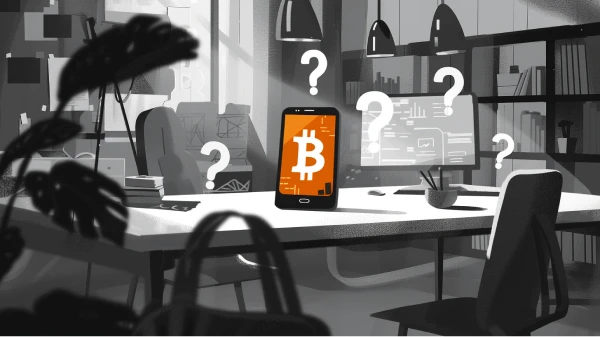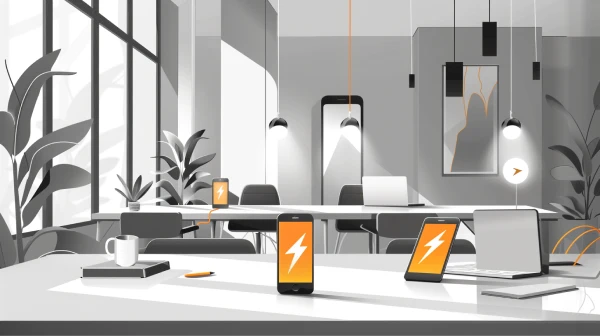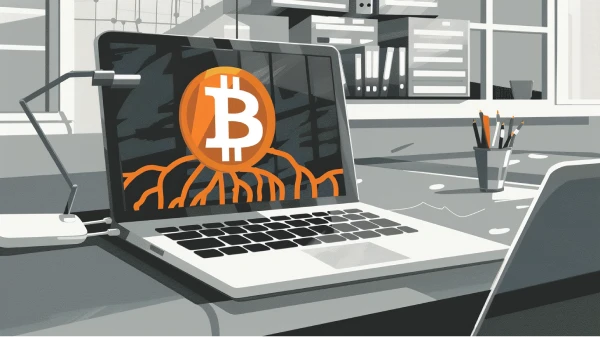Bitcoin’s Scaling Problem
Bitcoin uses a blockchain to process payments, and currently, Bitcoin’s blockchain can only process 7-10 transactions per second. In a world with almost 8 billion people, this is not nearly enough throughput to allow Bitcoin to serve as the global currency.
This scaling problem was identified by some of Bitcoin’s first adopters, including Hal Finney, the receiver of the first Bitcoin transaction. Many Bitcoin users have proposed a variety of solutions to these problems. Bitcoin will scale through a combination of several of these proposals.
How Bitcoin Can Scale
Bitcoin is both a digital token and a distributed network. Bitcoin, the token, is transferred between users, and the distributed network processes and tracks the history of these transactions using a blockchain database.
However, bitcoin tokens can be transferred outside of the blockchain, using other networks and protocols. This allows bitcoin to scale and host the enormous payment throughput required for bitcoin to become the dominant global currency.
Bitcoin can be scaled in two ways: the blockchain can be upgraded to enable greater throughput, and additional networks, called layers, can be created to allow bitcoin to be transferred without directly using the blockchain.
Scaling the Bitcoin Blockchain
The reason Bitcoin’s blockchain can only process 7-10 transactions per second is that Bitcoin blocks are only produced every 10 minutes on average, and each block can contain a limited number of transactions.
The block time, the 10 minute interval between Bitcoin blocks, was established at Bitcoin’s creation, and will not likely change in the future. The limit on the size of each block however, has changed several times. In 2010, Satoshi Nakamoto established the rule that no block could exceed 1MB in size. In 2017, that limit was altered via the SegWit upgrade, which raised the limit to 4MB. However, most Bitcoin blocks remain around 1.3MB in size.
These limits are set by the Bitcoin network to prevent the size of the blockchain from growing too rapidly, so they will not likely change in the future. Thus, most efforts to help the Bitcoin blockchain scale focus on reducing the data required in Bitcoin transactions. For example, the Taproot upgrade introduces more efficient transactions that take up less space in a Bitcoin block.
Layered Scaling Solutions
Efficiency improvements to the blockchain are incremental, so they are not a comprehensive solution for scaling Bitcoin to the billions of users who need to be onboarded. Therefore, additional methods for transferring bitcoin, called layers, are needed.
A layer is simply a network other than the Bitcoin blockchain that allows users to use bitcoin. Layers allow Bitcoin blockchain transactions to represent or settle large numbers of payments in batches. Layers connect with the blockchain, but they do not broadcast every single transaction to the blockchain, saving on fees and enabling more rapid settlement.
The Lightning Network
The most prominent layer on top of Bitcoin’s blockchain is the Lightning Network (LN). The Lightning Network enables micropayments and small day-to-day transactions that are no longer economic on Bitcoin’s blockchain. Lightning enables instant and free or nearly free payments between parties using channels.
Lightning channels are opened and closed using regular Bitcoin transactions and the blockchain, but once a channel is open, an infinite number of Lightning transactions can be executed.
➤ Learn more about the Lightning Network.
The Liquid Network
Some layers use their own blockchains instead of Bitcoin’s blockchain. The Liquid Network uses a blockchain very similar to Bitcoin’s, but Liquid is governed by a group of entities, and is not completely decentralized. By sacrificing decentralization, Liquid can guarantee low fees and rapid settlement.
Unlike the Lightning Network, which natively uses bitcoin, the token, the Liquid Network issues a separate token to represent the real bitcoin deposited by a user.
eCash, Fedimints, and Second-Party Custody
Chaumian eCash mints, also known as Chaumian mints, or blind mints, are collections of protocols and software that allow operators to provide users with privacy-enhanced eCash notes which are underpinned by deposited bitcoin.
Enhanced privacy comes from utilizing blind signatures such that the operator can determine whether or not the eCash note is valid, but cannot determine whether the redeemer of the note was the same individual who minted it. What results is a system in which users have privacy from each other and the mint operator(s).
Cashu is a Chaumian mint operated by a single entity. This model can be useful as the mints can be spun up quickly and enable greater flexibility in the development cycle, but users must have a relatively high degree of trust in the mint operator.
Fedimints are mints where users’ funds are held by multiple guardians—federated in the sense that no single custodian controls all funds. Fedimints are based on second-party custody models; essentially, this means that users place their trust in their families, friends, and community. This allows users to achieve better privacy and security with the ability to socially sanction community members in the event of a trust violation.
Additional Layers on Top of Bitcoin
In the future, more layers will be built on top of Bitcoin. These layers will make spending bitcoin faster, cheaper, and easier, and they allow users to transact in bitcoin without paying high fees required to use the blockchain itself. Through improvements in the Bitcoin protocol as well as innovative new layers on top of Bitcoin’s blockchain, the Bitcoin network will eventually support billions of daily transactions, from tiny micropayments to international settlements.
Key Takeaways
- Bitcoin's blockchain can only process 7-10 transactions per second, which is not enough to host all of the world's payments.
- Additional payment platforms will be built on top of Bitcoin, using the same bitcoin token, but enabling faster and cheaper payments.
- Such layers already exist, and more are being built at a rapid pace. These layers will help the entire world use Bitcoin, even if they do not use the blockchain directly.


